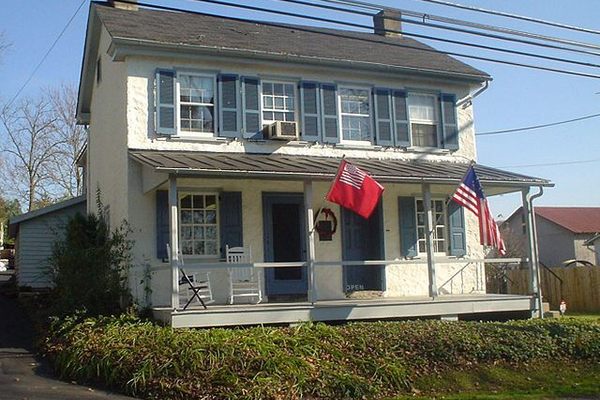Museum of the Shenandoah Valley
Extraordinary objects lurk in this quintessential regional museum.
The Museum of the Shenandoah Valley delivers admirably on all that one could expect from a museum about the history and art of northwest Virginia, but a closer examination reveals items that will elicit an involuntary and audible “hmmmm” from any attentive visitor.
Many museums focused on rural Americana display overwhelming oodles of implements no longer in common use, but the curators of this museum have thoughtfully culled a few extra-unusual items sure to pique the curiosity of visitors. A wall invites visitors to guess at the purpose of these objects, some of which seem more appropriate for a display about the Spanish Inquisition.
A low-tech printed catalog hangs nearby offering answers for the inquisitive. A spikey wooden pole is not, in fact, a probe for infidels, but an old-style apple picker, and what appears to be a “rack” is a form for bending wood for making chairs.
And then there is the iron rabbit. No one seems to know what this is for. A doorstop is the best guess, but it does seem to be a bit elaborate for such a simple task. And once the iron rabbit mystery grabs your attention, you start to notice that other objects in the museum are not as conventional as one might expect from the Shenandoah Valley.
In one corner sits a beehive woven from ryegrass, a small opening at the bottom being the only outward hint that it was for bees. A placard explains that once distillers had harvested the grain they needed, the discarded shoots were put to use in a wide variety of woven products, although there seems to have been little buzz about the woven beehive industry.
Cases feature everything from a “tramp art” poison bottle to iron spoon stakes (for making spoon bowls) to a sugar cutter to a giant copper still, all interspersed in galleries designed to intrigue and not to exhaust.
The gardens next door feature a large copse of towering red castor bean plants (dripping with ricin fortified fruit) among many alluring flowers and vegetables, creating a jaunty path to the door of the Glen Burnie mansion. The estate was owned by the same family from the 1730s through the 1990s, and its final owner, Julian Wood Glass, Jr., was the founder of the museum.
Once inside the house, visitors should be on the lookout for more surprises, particularly the Staffordshire figurine of Benjamin Franklin labeled “Washington.” The English pottery, apparently unfamiliar with the giants of American history, created this identity crisis that once made it all the way to an episode of Antiques Roadshow.
The unique museum also features a makerspace, traveling exhibits, a miniatures gallery, and a permanent collection of impressive landscape paintings. After one visit to the Shenandoah, you will long to see it again, just as the song promises.
Know Before You Go
The museum is open year-round Tuesday through Sunday. The Glen Burnie House and gardens are open seasonally from April through December.


























Follow us on Twitter to get the latest on the world's hidden wonders.
Like us on Facebook to get the latest on the world's hidden wonders.
Follow us on Twitter Like us on Facebook